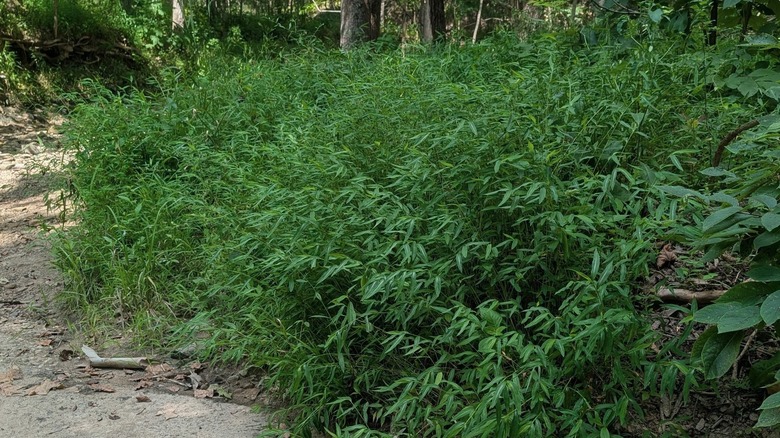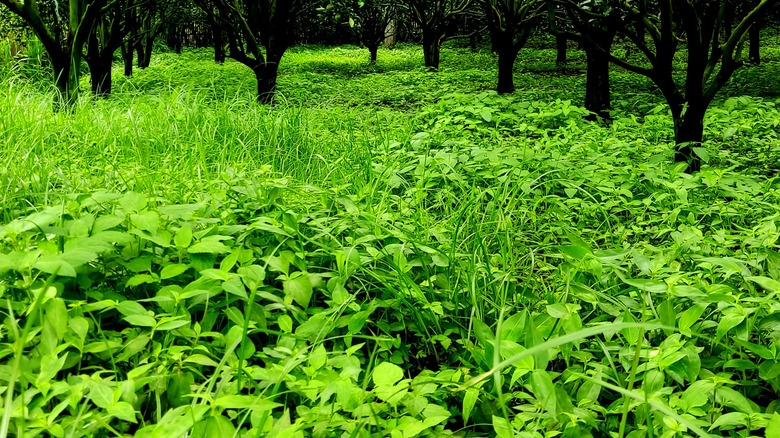Scientists Call On Wisconsin Homeowners To Help Stop The Spread Of This Highly Invasive Plant
Invasive plants are a problem no matter where you live. They can easily take over a space, which is why there are things like fast-spreading invasive ground covers to steer clear of in your yard. However, sometimes accidents happen and certain plants gain ground somewhere they shouldn't, which is exactly what is happening in Wisconsin.
The plant causing problems in question is known as Japanese stiltgrass (Microstegium vimineum). It's an annual plant that poses quite a bit of danger to forests. According to Extension weed specialist and professor at University of Wisconsin-Madison Mark Renz, this stiltgrass affects a lot more than that. He told WIFR, "It makes wildfires more frequent and severe, alters nutrient cycling and soil microbes, and reduces wildlife habitat, all of which decreases biodiversity."
"What it does is it produces a lot of fuel, and when that annual grass dies in the winter, that fuel persists, so it can increase the timeframe when fires naturally can occur in the forests," Renz further explained to WPR. To know if you're looking at the right grass, there are both field guides and videos to check out. However, the basic description is that it can grow up to 3 feet long, has weak roots, leaves are 2 to 4 inches long and ½ inch wide, leaves are tapered to points at both ends, and the midrib line is a silver color that isn't directly in the center of each leaf. While it started in Rock County, the extension office also asks residents of Grant, Lafayette, Green, Walworth, and Kenosha counties to keep an eye out in case it has spread farther than expected.
What to do if you come across Japanese stiltgrass
Unfortunately, Wisconsin is not the only place where Japanese stiltgrass is found. It's also harming other U.S. forests, including in states like Illinois, and is one of the most important weeds to pull in late summer and early fall. UW Extension is asking people to keep an eye out and report any Japanese stiltgrass they find. Wisconsin's Department of Natural Resources is pushing to catch any stray patches as soon as possible, as the Japanese stiltgrass shouldn't produce flowers and therefore spread until September.
This species has notoriously weak roots, but that doesn't mean it's easy to get rid of. There was one other outbreak of Japanese stiltgrass in Wisconsin in 2020, isolated in parts of La Crosse County. Unfortunately, the Department of Natural Resources is still fighting to eradicate the plant there. If you come across this grass, UW Extension asks you to take several pictures showing the grass up close and the surrounding area, and note where exactly you found it, how thick, and how large the patch is. Then, you can send all of this information to forestry@extension.wisc.edu or invasive.species@wisconsin.gov.
Mark Renz shared ways people can do their part to prevent the invasion of a species on Wisconsin Horticulture Division of Extension. "In addition to monitoring, make sure to clean your boots, clothes, pets, vehicles, and equipment before traveling from one woods to another. That way, you can do your part every day to slow the spread of invasive species," he said. You can also avoid planting any in your yard, though there are clever ways to keep invasive plants from spreading in your garden.

